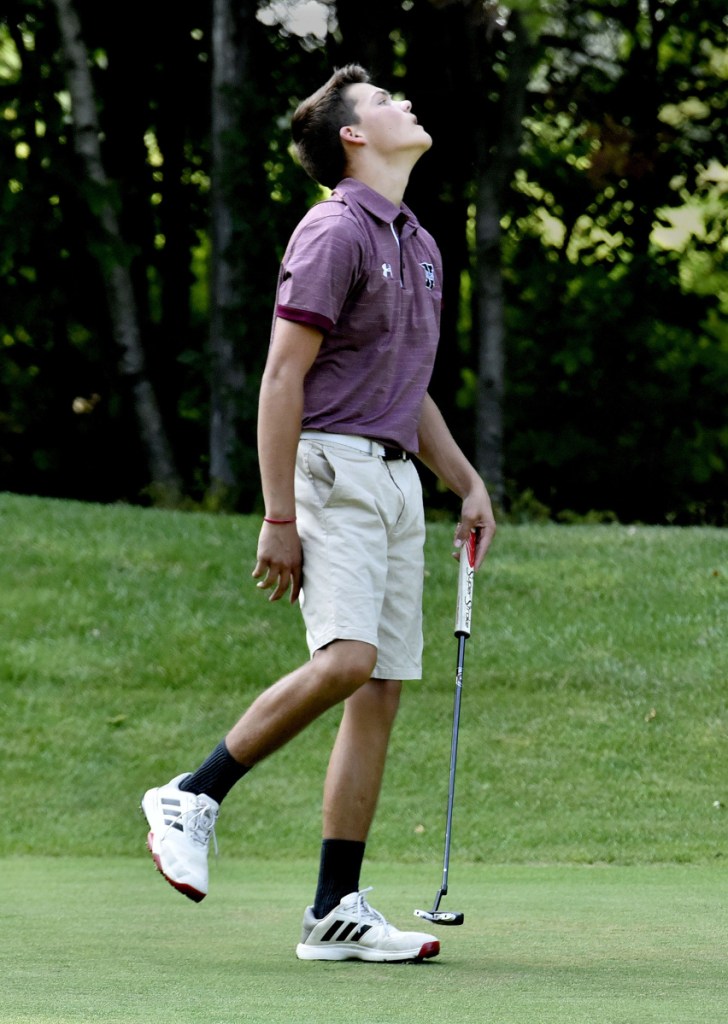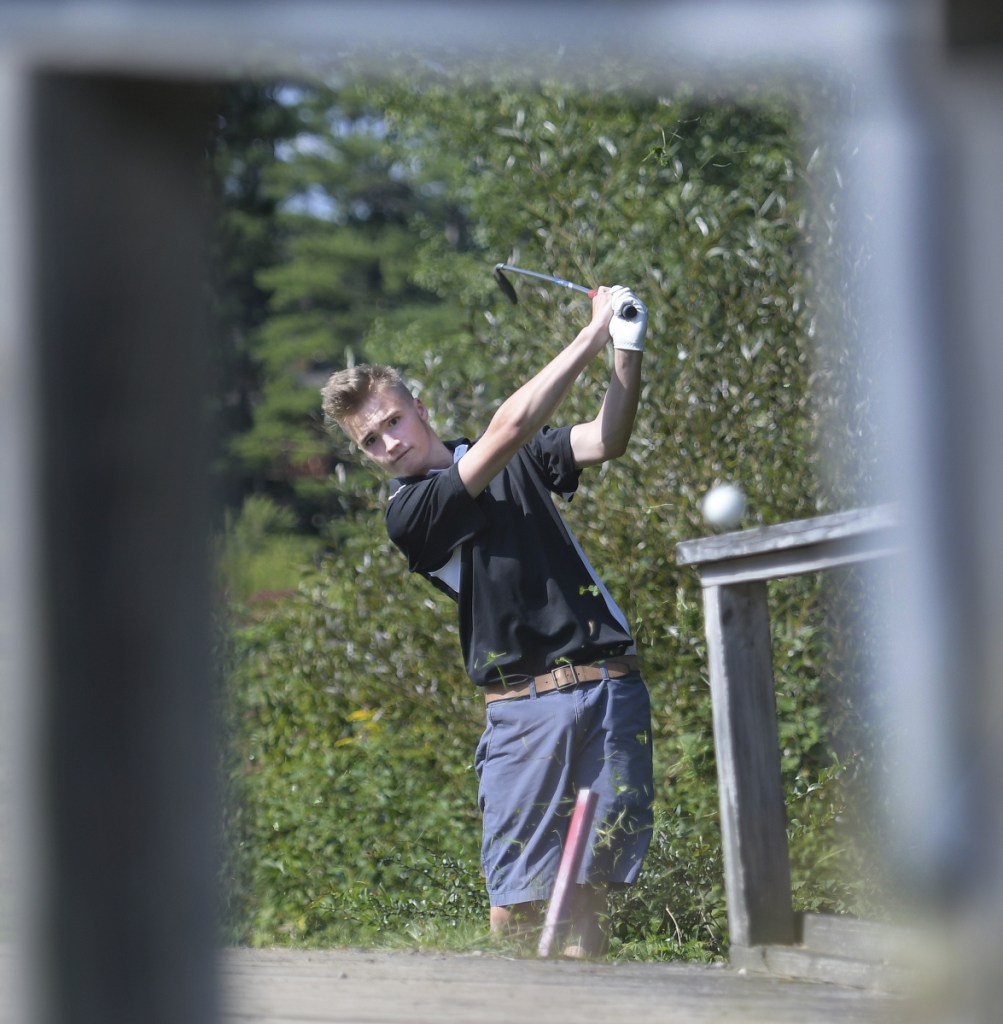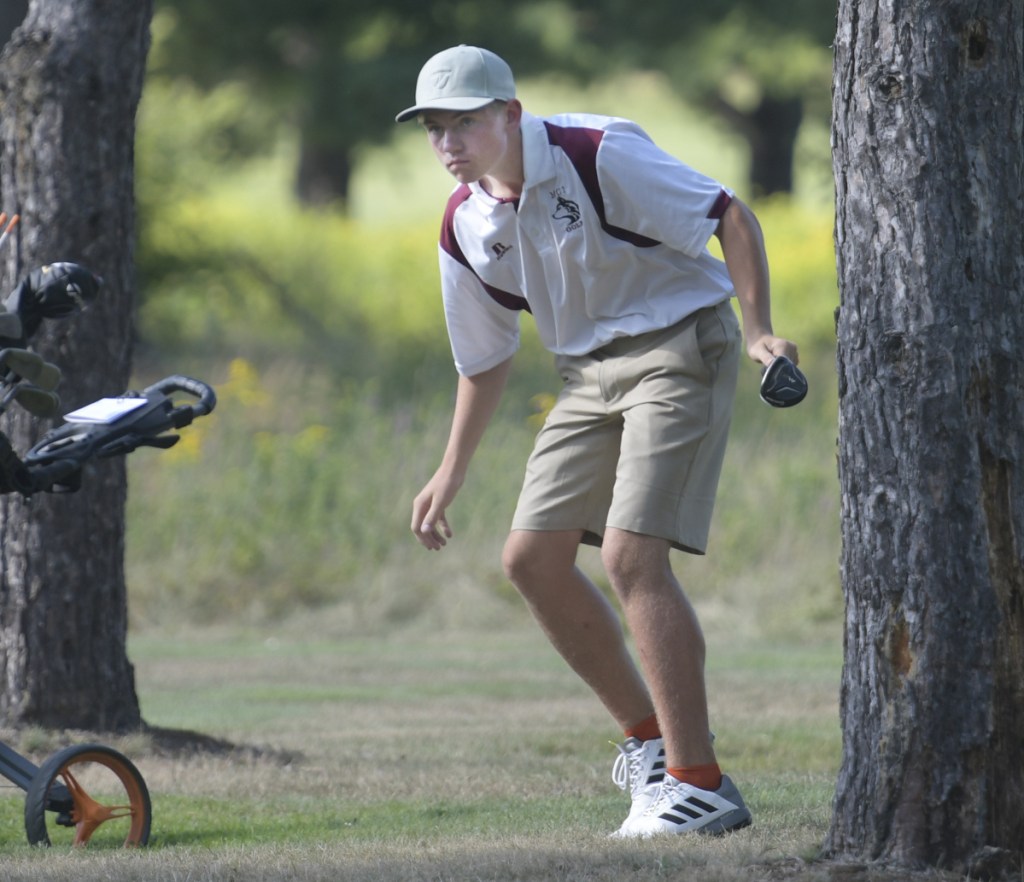The Cony golf team was holding its first tryouts of the season. And the head count wasn’t good news for coach Shawn Johnson.
The Rams coach had eight freshmen turn out last year. There was one freshman in this year’s group. Year after year, Johnson had seen 16 to 18 players show up the first day. This time, there were only 12.
“That’s the lowest number I’ve had in a few years,” he said. “Quite a few years, actually. And I don’t know exactly why.”
Few coaches do. But none of them are denying the current trend in the area. At the winning programs and the losing ones, the big schools and the small, numbers are dwindling. Scores are climbing. And teams are folding.
By every metric, golf is hurting.
“I’m hoping it’s just one of those (things), ‘OK, we’re just having a down year, next year I’ll have more kids that play,’ ” Johnson said. “But I’m not going in the right direction.”
Across central Maine in recent years, many golf teams have taken what has ranged from a couple of jabs to a few body blows. Winslow lost its formerly competitive team, and Mt. Blue didn’t get enough players to field a team last year. Carrabec doesn’t have a team this year. Oak Hill couldn’t field a team this year. Neither could Telstar.

Maranacook’s Corbin Howe hits a shot over a cart bridge during a match Monday against Maine Central Institute, Waterville and Gardiner at the Augusta Country Club in Manchester.
Even the more stable programs are showing dents. Cony’s turnout is down, 2016 Class B state champion Erskine is down to nine players and Messalonskee, one of the more well-off teams in the area, has seen the number of kids trying out drop from 46 players 10 years ago to 24 this season.
Some coaches have taken it upon themselves to find players, looking for anyone with experience to bolster the numbers.
“I have to do recruiting,” Nokomis coach Matt Brown acknowledged. “I don’t get a lot of kids that just say ‘Hey, I’m going to go play on the golf team.’ Sometimes I have to see who’s not playing a sport and encourage them to come try it.”
Even so, willing and able players have been hard to find.
“I think now, it’s definitely on a downward spiral,” Erskine coach Mark Bailey said. “I’m not sure why.”
They have their theories. One is that a lack of buzz at the professional level trickles down and becomes a lack of interest at the high school tier. Another is that the sport’s less extensive coverage drives athletes to football and soccer and field hockey instead. Still another is that this isn’t a specific golf issue, but that golf just shows the symptoms other high school sports do.
“I really think there’s a decline, if you look right straight across the board in football, soccer a little bit, field hockey,” Messalonskee coach Jim Kerschner said. “They’re just not playing at that level.”
Another is that the financial commitment proves too demanding. In the more affluent southern Maine towns, teams are strong and turnout is high. Go north, however, and the prospect of buying clubs and paying for memberships becomes all the more daunting.
“Economically, I think we’re a little bit depressed in the central Maine area,” Brown said, “and a lot of kids don’t look at golf as a viable option.”
“Even going to the range, you’ve got to shell out five, six bucks for a bucket of balls,” Bailey said. “Nowadays, that’s not easy for families.”
Even for the kids who can afford to play, golf’s tricky, frustrating nature can deter anyone looking for a sport from giving it a shot.
“You can’t just show up and expect to be Tiger Woods,” said Madison coach Heath Cowan, whose roster is down to five players from 12 four years ago. “I can go run cross country, all I’ve got to do is stay on the trail. If I’m fast, I’m going to be good at it.
“If you can’t get the ball in the air, it’s not any fun. It’s not easy to stand up there and not be able to hit the ball when all your friends are watching you.”
The focus, then, becomes growing the interest of the sport in the area and building a base of, as Bailey called them, “full-time” golfers. Mt. Blue coach Mark Cyr said that responsibility falls mainly to the local courses.
“Golf courses in the area have to promote junior and youth golf,” he said. “In order to keep the game going, they’ve got to get these young kids playing. You’ve got to have golf courses that are willing to promote and fund youth golf.”
According to Cyr, that means junior leagues so young players have friends and peers to play and compete with, and lowering fees for junior memberships in order to encourage children and teenagers to get into the game early.
“Make it one to two nights a week, whatever. During the summer, get them out there early in the morning, whatever works best for the kids. But get them out there,” he said. “Get a hook in them early. I tell my kids, this is a lifetime sport.”
The courses that do this have seen the efforts pay off. Natanis Golf Course, which is active in the junior golf scene, serves as the home course for Erskine’s successful program, while Waterville Country Club has grown skilled players that have provided the core for Waterville (third in Class B last year) and Messalonskee (eighth in Class A).
“I definitely think that would be an advantage,” Johnson said. “To have a course not only near, but one that’s really kid-friendly and promotes it.”
Coaches are concerned. But with avenues still open for the game to thrive, they’re not panicking either.

Sam Smestad of Nokomis shows his frustration after a missed shot during a match against Erskine on Monday at Palmyra Golf Course.
“I think it’s cyclical in some ways,” Johnson said. “It’s the ‘flavor of the week’ type thing, and maybe golf’s not there right now.”
“I agree 100 percent (with Johnson),” Brown said. “Some years you get a lot of people, and some years you don’t.”
There’s already been encouragement this season. After shutting down last year, Cyr’s Mt. Blue team had nine players turn out, and is back competing at the JV level this season. It’ll take work, but while the local teams suffer for numbers, the people coaching them are confident the fortunes can change.
“I do think it’s in a little bit of a downturn, but I’m not worried,” Erskine’s Bailey said. “I think it comes around again.”
Drew Bonifant — 621-5638
Twitter: @dbonifantMTM
Send questions/comments to the editors.











Comments are no longer available on this story